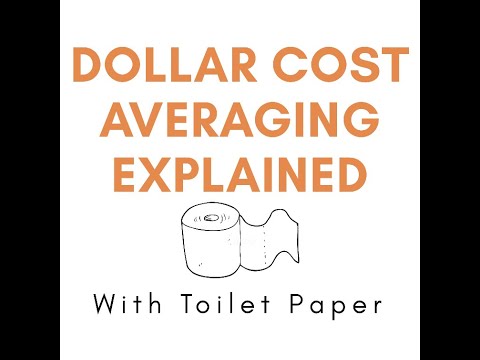Written by: Corey Janoff
Today I want to talk about investing a bear market. Seems pretty relevant right now with the stock market being down and all. A stock market is officially considered a bear market when it is down 20% from its peak. From late February to early March 2020 we experienced the fastest bear market ever. Usually the stock market takes more than a few weeks to drop by 20% or more, but these are unusual times, to say the least. So, how does one go about investing when the market is down?
Stocks are Selling at a Discount
When stocks decline in value, people tend to freak out like Chicken Little and think the sky is falling. I understand why. People see the value of their hard-earned dollars that they have socked away shrinking and it is not a good feeling. Let’s take a step back and remind ourselves what stocks are for a minute.
A stock is a share of ownership in a company. As an investor in a company, hopefully you have faith in that company’s ability to deliver desirable goods or services in a profitable manner. Otherwise, why would invest in the first place. The price of the stock is merely how much you have to pay to own a percentage of that company.
Therefore, if a stock’s price drops, it is now less expensive to purchase shares of ownership in said company. If you still believe that there will be a demand in the long haul for that company’s goods or services, you can participate in their potential future profits for a smaller entry fee than before. What’s not to like about that?

Investing in stocks is a long-term game. Short-term stock price fluctuations shouldn’t be of much concern to a stock investor. Money you need soon shouldn’t be invested anywhere near the stock market. We should only be investing money in stocks if that is earmarked for 5-10+ years in the future.
For a long-term investor, which all investors in stocks should be, bear markets present a great opportunity to gobble up shares of stocks at discounted prices. If you are still adding money to your portfolios because you haven’t saved up enough to retire yet (which describes most of the readers of this blog), this should be an exciting time. You can now buy more shares for the same amount of dollars as before.
Focus less on the current price of the stocks you are buying and more on the number of shares you can buy with your dollars. If you are still in accumulation mode (which most of you are), you want to accumulate as many shares as possible. Bear markets allow you to accumulate more shares.
Have a Plan
If you are a pilot of an airplane preparing for a cross country flight, you will have a flight plan. You are not going to get in the cockpit, take off, and hope for the best. You will draw out the flight path you want to follow to get you to your destination. Odds are things won’t go perfectly according to plan, but you have a roadmap to follow.
The first thing you should do before investing is develop a plan. This was something that was emphasized in our recent podcast, Navigating a COVID19 Market. Hopefully, a plan was in place before the bear market occurs. If not, we can’t go back in time, so now is as good of a time as any to get a plan together.
 Subscribe to the podcast: Financial Clarity for Doctors
Subscribe to the podcast: Financial Clarity for Doctors
The plan doesn’t need to be super detailed. You could even write it out on a piece of scratch paper if you want. The purpose is to have a general strategy in place.
An example of an investment plan might be as follows:
- I will invest 10% of each paycheck into my 401k at work into a globally diversified portfolio of 80% stocks, 20% bonds.
- I will invest $2,000/month in a taxable brokerage account into a globally diversified portfolio of 80% stocks, 20% bonds.
- I will max out my Backdoor Roth IRA in January of every year and invest in a globally diversified portfolio of 100% stocks.
- If the stock market drops by more than 20%, I will add excess money from my savings account (if available) into my taxable brokerage account to invest.
It can also help to have a list of financial goals you are shooting for to remind yourself why you are investing in this particular manner. Ideally these financial goals revolve around your happiness.
I don’t care how simple or how detailed the plan is. Whatever floats your boat. The point is to have something to refer to as a guide during times like these. We can’t lose sight of our financial goals on our quest for financial independence. Keep your eye on the prize and don’t let distractions along the way get the best of you.
Dollar Cost Averaging
Part of your investing plan in a bear market should automatically include a concept called dollar cost averaging. If there is any term you understand in a time like this, this should be it. Below is a short video of me explaining dollar cost averaging using toilet paper as an example.
Getting back to the first part of this blog post where I discussed how stocks are selling at a discount, dollar cost averaging allows you to automatically purchase more shares when stocks go on sale. By investing a set amount of money at regular intervals, you will purchase as many shares as you can for that set dollar amount. If share prices are higher, you will purchase less shares. If share prices are lower, you will purchase more shares.
Naturally, this will lower your average purchase cost per share of your investments, because you are buying more shares when prices are lower and less shares when they’re higher.
Remember, as a long-term investor, you should be less concerned about the current price of stocks and more interested in the number of shares you can accumulate over time. You want to accumulate the largest quantity of shares possible. Adding a consistent dollar amount to your investment account regularly to buy as many shares as possible and also buying more when prices are lower, will help you achieve that goal.
You cannot control stock prices. You cannot predict with consistent accuracy when prices will change. You can control how much you invest and the strategy you implement. Focus on accumulating as many shares as you possibly can. The best way to do that is to keep buying shares consistently over time.
What About Older Investors in a Bear Market?
Up to this point, I’ve mostly been writing for younger investors who are still in accumulation mode. For older investors who don’t have as much time to keep buying shares, or who are maybe already in retirement and drawing money from their portfolios, bear markets create more anxiety.
That being said, the core principles still hold true. Focus on the number of shares, not the prices. We can’t control the prices, so no sense in worrying about them. We should have a plan in place already. That plan might look something like this:
- Money needed in the next 3 years is invested in cash and money market funds.
- Money needed for 3-5 years is invested in CD’s and short-term municipal bond funds.
- Money needed 5-10 years from now is invested in a diversified portfolio of medium & high quality bonds.
- Money needed 10+ years from now is invested in a globally diversified portfolio of stocks.
Short-term money is nowhere near stocks. In this example, money needed in the next decade is not subject to the roller coaster ride that is the stock market. This person has plenty of time to allow their stock prices to hopefully rebound and recover before they will ever need to touch them. It all gets back to having a plan and knowing what you are investing for.
In Summary
Having a plan in place will help you navigate the bear market with confidence. Stick with the pre-determined strategy to maximize the potential of dollar cost averaging. For many investors reading this, bear markets present a great opportunity to accumulate shares of your desired investments so you can hopefully benefit immensely in the long run.
Related Blog Posts:

Investing in stocks and bonds involves the risk of loss, including total loss of principal. Consult with your investment advisor before implementing an investment strategy or making any investment decisions. Investing regular amounts steadily over time (dollar-cost averaging) may lower your average per-share cost. Periodic investment programs cannot guarantee profit or protect against loss in a declining market. Dollar-cost averaging is a long-term strategy involving continuous investing, regardless of fluctuating price levels, and, as a result, you should consider your financial ability to continue to invest during periods of fluctuating price levels.


